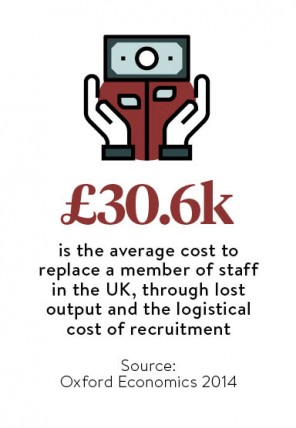A job for life is a thing of the past, with younger generations now likely to have a number of careers before they retire. Nevertheless, employees are increasingly demanding more from employers in return for giving their best.
According to the Chartered Institute of Personnel and Development’s (CIPD) Learning to Work: Developing the Next Generation report, there are currently four generations in the UK workforce – veterans, baby boomers, Generation X and Generation Y also known as millennials – soon to be joined by Generation Z, and each generation has its own set of demands.
At one end of the scale, Generations Y and Z are typically understood to be tech savvy and goal orientated with a passion for learning and flexible working; while at the other, older workers are either grappling with whether they can afford to retire or deciding if they’d like to remain in work beyond their expected retirement age because they enjoy it.
 Throw into the mix the “sandwich generation”, squeezed by the responsibilities involved in caring for both children and elderly parents, and employers face a mammoth task in fathoming out how to identify the tools and support required to engage and motivate their workforce. To further complicate the issue, the needs of each generation are not mutually exclusive.
Throw into the mix the “sandwich generation”, squeezed by the responsibilities involved in caring for both children and elderly parents, and employers face a mammoth task in fathoming out how to identify the tools and support required to engage and motivate their workforce. To further complicate the issue, the needs of each generation are not mutually exclusive.
Mark Beatson, CIPD’s chief economist, says: “There’s always more variation across generations than there is from one generation to the next, so a sensible approach is always to treat everyone as individuals.”
Yet, how can employers possibly support such a diverse range of needs? The answer is simple – they can’t. Companies of all shapes and sizes will continuously experience natural attrition, which means that it’s more practical for them to identify a churn rate with which they’re comfortable.
Evaluating employee needs
Employees must also understand their workforce composition. Who is it that they’re trying to engage, and what support do they need to do their job to the best of their ability and for as long as possible?
A common, but avoidable, error is for companies to make sweeping assumptions about employees’ needs, which is a waste of time, money and effort for everyone involved, and will be ineffective in helping to engage the employees.
One professional services firm found this out the hard way when it assumed its staff valued cash and bonuses while in fact paid sabbaticals were of more interest to the majority of the workforce.
Employee surveys and focus groups are key in helping organisations to understand employees’ needs, which may range from comprehensive healthcare to more generous pensions contributions and holiday allowances.
Chris Rowley, professor of human resource management at Cass Business School, City University, London, says equitable and transparent management, secure and fulfilling jobs, trust and respect, training, development and career progression, team work and participation, flexible working and supporting work-home balance have helped companies to engage their employees in the past.
But he adds: “The applicability and veracity of these requires re-evaluation in the context of organisational strategies and labour-market changes, with higher workforce turnover and career changes.”
Adapting to the modern workforce
It’s also key for companies to re-examine the definition of employee engagement in the context of the modern workforce.
Engaged employees are sustainably engaged to their organisation, according to Tom Hellier, UK reward lead at Willis Towers Watson.
He explains: “They are committed to their organisation, which means they’re loyal to it and have an affinity to it. They have an emotional attachment to it and believe strongly in what it is the organisation is doing, and have faith in the leadership. And they feel enabled to do their best work with the right tools to do it, and they feel supported by their management.”
Accordingly, in addition to ongoing training, flexible working and work-life balance, an organisation’s corporate social responsibility agenda and the extent to which it gets involved in and supports, for example, charity fundraising and local community involvement is of increasing importance to employees of all ages.
Once in place, companies need to measure the effectiveness of their efforts on an ongoing basis.
There is no shortage of firms offering to measure organisations’ engagement levels, so companies need to undertake the necessary due diligence to identify an approach which uses measures that meet its requirements and, of course, budget.
Inevitably, there will always be businesses uninterested in engaging staff. “For some businesses, it seems greater engagement is not of interest, but rather practices encouraging the opposite and disengagement, such as the growth of zero-hours contracts,” says Professor Rowley. “And the need for enforcement regulations around a national living wage does not imply much reciprocal commitment from companies.”
But, thankfully, there are a growing number of companies that recognise the power of a well-considered engagement strategy in helping to motivate employees to invest the discretionary effort required to help grow the business and boost its corporate reputation in the process.

